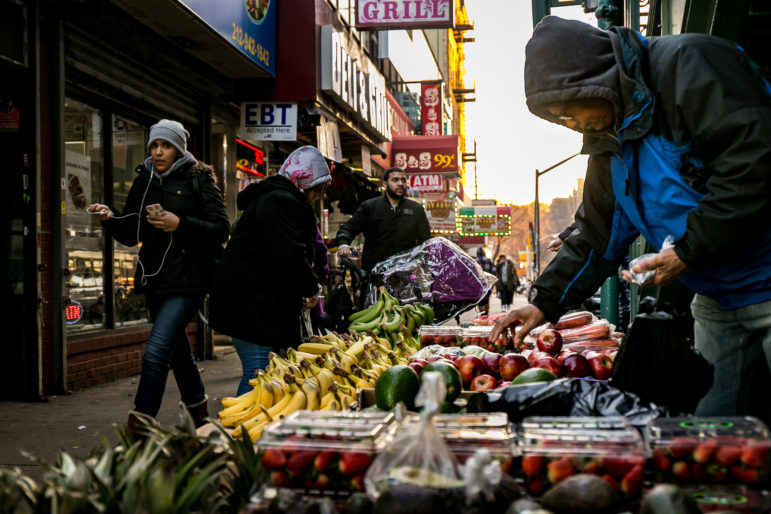
Adi Talwar
The southeast corner of 207th Street and 10th Avenue, in the heart of the proposed rezoning footprint.
On January 16, the City Planning Commission certified the de Blasio administration’s proposed rezoning of Inwood. That means the Inwood rezoning has officially entered the seven-month public review process known as the Uniform Land Use Review Procedure (ULURP) through which a rezoning is approved or disapproved.
City Limits has distributed a free newsletter in Inwood about the proposal and the review process. You can see it below, or view a Spanish version here. One note: At least one of the meeting locations has changed since press time. For an updated list of dates and places, go here.
Inwood is the fifth neighborhood rezoning under the de Blasio administration’s affordable housing plan to enter ULURP. The Inwood proposal also grew out of local councilmember Ydanis Rodriguez’s vision to redevelop Inwood east of 10th Avenue and create a technology and healthcare hub.
The rezoning, proposed by the Economic Development Corporation (EDC), would allow substantial residential and commercial development in areas on and east of 10th Avenue both north and south of the MTA railyard, which are currently mostly zoned for industrial or auto-uses. The rezoning would also allow an increase in residential density on East 207th Street, Dyckman Street and Broadway, and it would apply “contextual zoning”—zoning to preserve the existing character of the area—to surrounding residential blocks. In all upzoned areas, the city would institute mandatory inclusionary housing, which requires that a portion of the units be rent-restricted.
Other components of the proposal would improve access to the waterfront and facilitate the redevelopment of Inwood library with over 100 units of income-targeted housing, a new library and a pre-K program.
The city estimates that these changes could lead to the development of 4,348 units of housing and 1.1 million square feet of commercial space, as well as new space for community facilities.
The proposal is part of a larger plan for the neighborhood that includes investments in housing preservation, neighborhood infrastructure, economic development initiatives, park investments, strategies to prevent displacement and other efforts. The plan also includes investments in broadband and youth STEM education, as well as tech and healthcare training programs at Washington Height’s new Workforce1 center.
Many residents have raised concerns about the proposal. The same day ULURP began, three neighborhood groups—Inwood Preservation, Northern Manhattan Is Not For Sale and Inwood Small Business Coalition—released a joint statement decrying what they labeled a top-down planning process and a rezoning proposal they argue will “result in gentrification and displacement of our majority-Latinx community and immigrant-owned small businesses,” strain infrastructure and encourage landlord harassment.
Foes of the city’s proposal believe the rezoning will spur development that displaces current residents, create new housing that is not affordable for local people, push out small businesses and fail to provide good construction jobs for local residents. There are also worries about the redevelopment of the library, the impacts on neighborhood infrastructure and the risks of developing in flood-prone areas.
A draft alternative plan created by Northern Manhattan Is Not For Sale includes a variety of policy ideas and a demand that all new housing be 100 percent affordable to households making incomes roughly from $17,000 to $85,400, while a draft alternative plan created by Inwood Preservation includes, among other ideas, zoning recommendations involving a more extensive use of contextual zoning, with modest commercial and residential development in some areas. The groups are working to merge their drafts into a single plan.
Over the coming months, Manhattan Community Board 12, followed by Borough President Gale Brewer, the City Planning Commission and finally the City Council will vote on the proposal. Given that Rodriguez invited the rezoning study, it’s likely he’ll want to move something forward. The question is what, and in what ways community feedback will shape that final proposal.









2 thoughts on “City Review of Inwood Rezoning Proposal: Read the Newsletter”
Pingback: Photograph Essay: Meet Inwood, a Neighborhood on the Verge of a Main Rezoning – Pin by Vurdpress
Pingback: At Inwood Rezoning Meeting, More Fears of Gentrification – Mediasota